
Every piece of evidence we have about the 2016 general election and the world around us points in the same direction: if nominated, Donald Trump would lose, and likely lose badly. The fact that Trump has defied expectations in the primary and survived numerous incidents (seemingly almost daily) that would end any other political career has given pundits and analysts an almost superstitious, gunshy awe of predicting failure for him – thus the “lol nothing matters” response you often get when you discuss both Trump’s obvious, glaring weaknesses and his pitiably weak standing in the polls. But the one straw commonly grasped by Trump supporters when confronted by the evidence is Gallup’s polling from early 1980 showing that Ronald Reagan was some 30 points behind Jimmy Carter, who of course he went on to demolish in the fall.
The Gallup 1980 polls are a weak analogy, for several reasons.
1. Strength of polling: When we talk about general election polls today, we really mean three types of polls (head-to-head national polls, head-to-head state polls, and polls testing the favorability/approval of various candidates with the general electorate). On all of these topics, as I have discussed before at length, we have a lot of polls from multiple pollsters, and we commonly use polling averages to account for the fact that individual pollsters can be wrong, sometimes very wrong.
By contrast, nearly all the public polling from the first three months of 1980 is from a single pollster, Gallup – and Gallup ultimately got the race wrong, showing Reagan trailing through much of October and only polling ahead by 3 at the end (a trend complicated by the fact that there was only one Reagan-Carter debate, it was the first second televised presidential debate in 20 years [ed. – Ford-Carter had debated in 1976], it was a week before the election and it was watched by a staggering and still-record 80 million people).

As Nate Cohn has observed of that fall’s campaign:
The legend of Reagan’s epic comeback is largely the result of anomalous Gallup polling, which even showed a Carter advantage over the final month of the campaign. But if RealClearPolitics or Pollster.com had existed in 1980, the conventional wisdom would have been a little different. In fact, Reagan held a lead from mid-September onward and had a two or three point lead heading into the debates. Private polling conducted for the Reagan and Carter campaigns showed the same thing. Reagan’s 10 point victory is a precedent for sweeping undecided voters, but it isn’t a model for a come-from-behind victory

2. A temporary Carter bump: 1980 was – unlike this one – an incumbent re-election campaign, in which the dominating issue is always the sitting President. Jimmy Carter was an extremely vulnerable incumbent throughout 1979, as his job approval in Gallup’s polling showed him dropping below 50, then below 40, then all the way to 29% in June and again October 1979.
What happened next was the Iranian hostage crisis. On November 4, 1979, Iranian radicals stormed the U.S. embassy and took 90 hostages, including 66 Americans, as part of the revolution that brought Ayatollah Khomeini to power. Within a few weeks, the number of hostages was narrowed to 53, later 52.
Americans tend to rally around their President in times of foreign crisis, and this was no different. As Americans tied yellow ribbons for the hostages, they wanted to put their faith in the deeply unpopular Carter to find a way out. Carter’s approval rating hit 54% in early December, and peaked at 58% in late January, staying above 50% into the beginning of March. But as the crisis dragged on, Carter’s weakness reasserted itself, and was back in the 30s by mid-April when the Desert One rescue mission failed. Carter never recovered; his approval rating even among Democrats hovered around or below 50% the rest of the year.
Even if you look at this Monkey Cage graph of the polls, what you see is that Reagan was steadily building, while Carter’s trend was straight downhill from January through July before dispirited Democrats started to rally a bit.

You can see that in the Democratic primary race of 1980. Carter won Iowa by 28 and New Hampshire by 10, and through March 18, he had won 9 out of 10 primaries against Ted Kennedy, losing only Kennedy’s home state of Massachusetts. Carter beat Kennedy in Florida by 37, in Illinois by 36, in Vermont by almost 50, in Alabama by almost 70.
But Carter’s declining standing as the hostage crisis dragged on showed up in the primaries – Kennedy won New York and Connecticut on March 25 and would beat Carter 9 more times between mid-April and late June, including big states like Pennsylvania and California. In an incumbent election – which 2016 is not – that’s a big sign.
3. The Republican primary calendar: On the flip side of the coin, the January-early March polls test Reagan just before he started winning primaries – a winning streak that unified the GOP behind him. In a crowded 7-candidate field featuring two future nominees (George H.W. Bush and Bob Dole), the Senate Minority Leader (Howard Baker), a former Texas Governor and Treasury Secretary (John Connally) and challengers from Reagan’s right (Congressman Phil Crane) and Dole’s left (John Anderson, who would win 7% of the vote in November as a third-party candidate), Reagan did not get off to the most auspicious start, losing Iowa and winning just two out of the first five votes through March 4. But his one big win, in New Hampshire on February 26, was much bigger than Trump’s, as Reagan drew 50% of the vote.
And once Reagan got rolling, starting March 8 in South Carolina, he showed what a tremendously strong party-unifying candidate he was: between March 8 and May 3, he won 9 of 11 states, including winning 55% in South Carolina, 70% in Alabama, 56% in Florida, 73% in Georgia, 49% in Illinois, 63% in Kansas, 74% in Louisiana, 53% in Texas.
Trump’s dynamic is precisely the opposite. Despite winning numerous primaries (so unlike Reagan in February he wasn’t polled as a second-place primary candidate), he has never been able to win Reagan-style majorities. Entering today, among 26 primaries/caucuses (not counting Guam and the Virgin Islands, where we have no vote totals), Trump hadn’t won a majority anywhere, has cracked 40% just 6 times in 26 tries, and has fallen below 30% nine times (he did win 73% of the vote today in the Northern Marianas Islands, in an electorate of 471 people). His overall share so far is 34.8% of the vote. Even if you ignore polling entirely, Trump still faces more resistance at this point than any GOP frontrunner since the start of popular primary voting in 1976. The primary voting itself is consistent with the view that Trump is running a factional campaign that the majority of Republican voters object to.
4. Reagan was already a winner: While it is understandable that some people (wrongly) thought Reagan would struggle to close the deal in a general presidential contest, the idea that Ronald Reagan was incapable of winning outside a divided GOP primary field was already ridiculous in 1980. To start with, Reagan had almost knocked off a sitting president in his own party in a head-to-head two-man race in 1976, in which he won a majority of the vote in 11 states. Moreover, in the largest state in the country, California, Reagan had won two statewide elections by wide margins – he defeated California’s sitting Governor, Pat Brown, 58-42 in 1966, and was re-elected 53-45 in 1970. Trump has never faced general election voters anywhere.
5. Trump is really, really well-known and really, really unpopular: Head-to-head polling this early in a non-incumbent race can change, as the candidates get better known by the public. But the problem for Trump, as public polling shows fairly unanimously, is that both he and Hillary Clinton are extraordinarily well-known candidates already, and Trump is significantly more unpopular even though Hillary has been on the receiving end of massive political opposition for most of the past 25 years (including a brutally contested primary in 2008). Just the latest poll averages show Trump at 61% or 62.4% of voters view him unfavorably, compared to 53.3% or 53.6% for Hillary Clinton. Those numbers are unprecedentedly awful for a presidential candidate, they’ve been consistently awful for months, and lately they’ve been getting worse, just as Trump falls further and further behind in more recent head-to-head polling and before he has ever faced a sustained negative ad barrage from the Democrats.
Reagan, with his sunny optimism and basic decency, was never anything like this personally unpopular. Pollsters didn’t ask the same kinds of questions in those days, but a Gallup survey in September 1980 asked about twelve different concerns voters had with Reagan, and only one of the twelve attracted a majority (52% thought Reagan “puts his foot in his mouth, says things without thinking or considering the consequences”; 48% thought he was too old for the job, and none of the other ten options attracted anywhere near a majority).
Is Trump Unelectable?
There’s no such thing as a completely unelectable candidate, as you never know when a deus ex machina event will overturn the tables to the point where the other candidate is no longer competitive. Christine O’Donnell could have won, under the right bizarre set of circumstances; so could Todd Akin or Alvin Greene or Carl Paladino. But it was easy enough for any reasonably intelligent person to see coming a long way away that those were not likely results, and that the reasonable response from their parties was to get as many people out of the blast radius as possible.
Without rehashing all the unique-to-Trump obstacles he would face in a general election, Trump would enter it in much the same situation as Akin, who won 36.1% of the vote in a divided GOP primary in which 603,000 people voted, and got 39.2% in November in an electorate of 2.7 million, and whose gaffe-tastic presence in the campaign created all sorts of collateral damage to other Republicans. In exit polls, 21% of Republican voters didn’t vote for Akin (15% went for his Democratic opponent), and he lost independents by 12. Akin narrowly carried white voters 48-45 and won by 12 with voters over 65 (53-41), but lost basically every other demographic badly. He lost suburbanites by 16 points. Now imagine what 2012 looks like with Akin as the presidential nominee.
Primary and general electorates simply are not the same people – in 2012, 18 million voted in the GOP primary, 129 million in the fall – and the ability to electrify a determined minority of one party among several choices is not remotely the same thing as the ability to be the first of two choices among all voters. Trump is banking very heavily on disaffected white working class voters, the fastest-shrinking demographic in the electorate; the same voters who made up 65% of the 1980 electorate were only 36% in 2012.
If we had no polling, we could rely on common sense to tell us that there are hard limits on the general-election appeal of a candidate who is boorish towards women, who has gone out of his way to offend non-white voters, who is running a proudly ignorant campaign based on what amounts to class war against anyone with an education, who consistently draws the opposition of around two-thirds of the party in his own primaries, who has never won an election before in seven decades on this earth, who somehow manages to staff his campaigns with people even more buffoonish than he is, and who has a long record of opposing his own party’s platform on nearly every issue of importance to its voters. The fact that we do have polling and it does confirm exactly what you’d have predicted in its absence should tell us not to keep doubting our own sanity just because he keeps winning pluralities in the primary. If Trump is the GOP nominee this fall, the rational response is to get as far away from his campaign as you can.


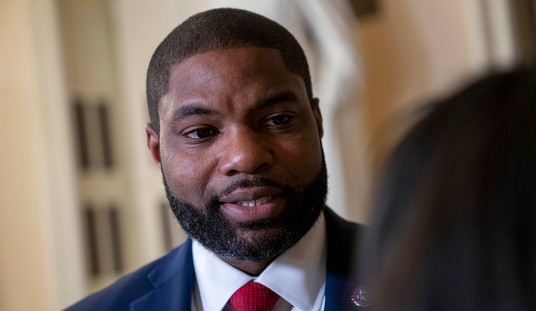


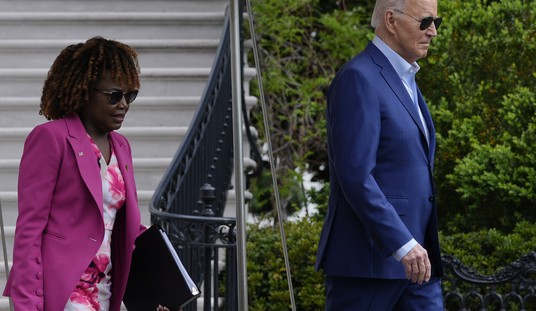
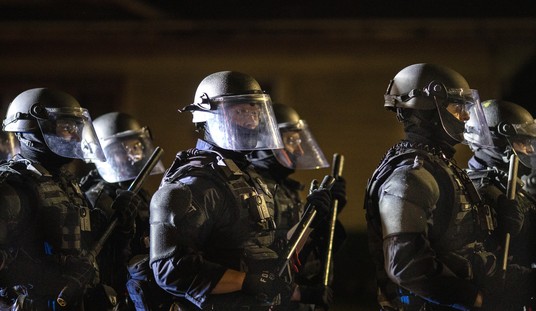
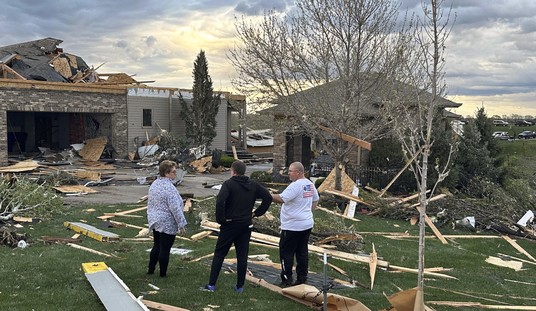

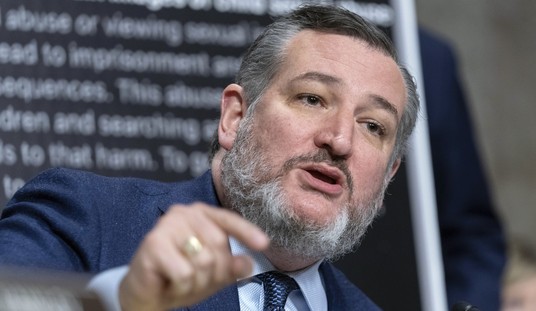




Join the conversation as a VIP Member